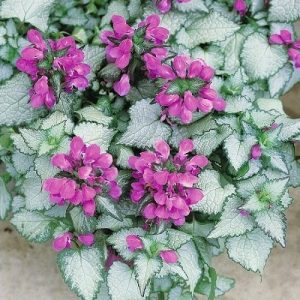This post shares my top tips about how to take care of a snake plant (otherwise known as a Sansevieria trifasciata or a mother-in-law’s tongue plant), as well as a photo list of 18 sansevieria varieties to help you identify what type of snake plant you have! The snake plant is an easy-to-grow plant. Follow these simple snake plant care tips, and your plant will thrive.
How to take care of a snake plant & IDs on 18 snake plant varieties!
Hey guys, today I’m talking all about how to take care of a snake plant! Otherwise known as dracaena trifasciata or mother-in-law’s tongue (who really calls it that, though?), the snake plant has been a houseplant staple for a long time.
Thanks to houseplant chic and the millennial obsession with plants, it’s enjoying a resurgence in popularity. Oh, and it’s super easy to take care of, which doesn’t hurt. It’s a striking plant with a variety of different patterns and color variations.
And it’s incredibly easy to find at your local nursery or online. Plus, it’s probably one of the absolute easiest plants to care for. So let’s chat about what your snake plant needs to thrive, as well as a few snake plant care tips!
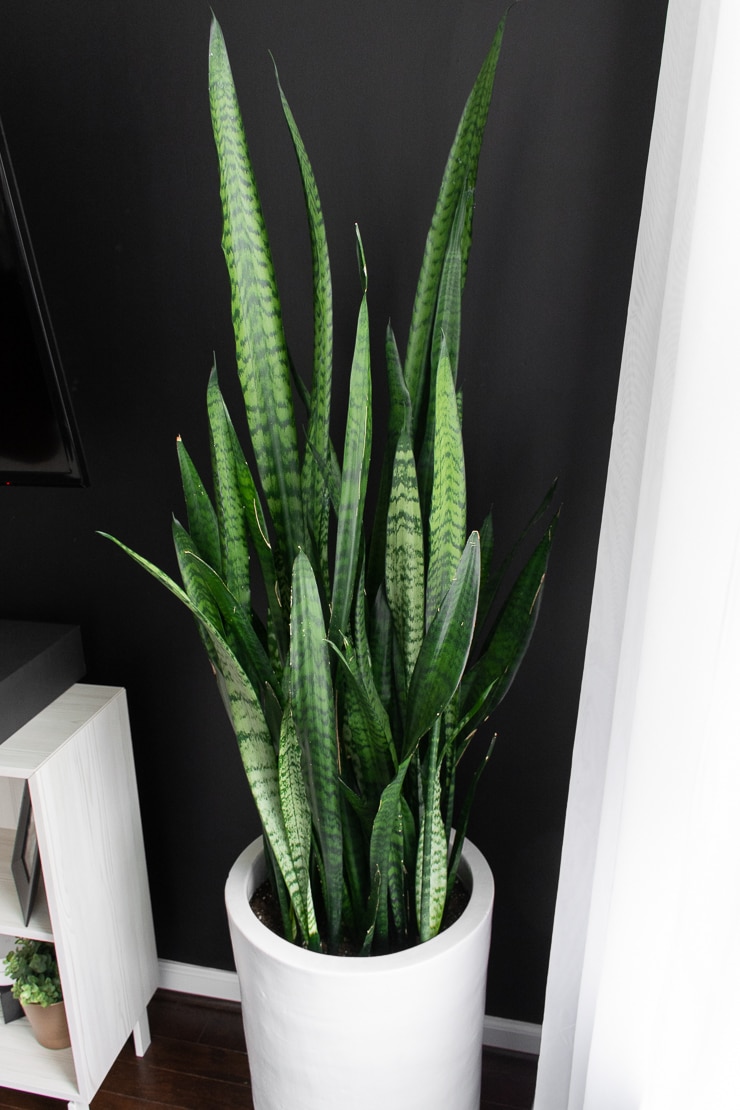
Where does the snake plant come from?
The snake plant’s full name is dracaena trifasciata, but it was known as sansevieria trifasciata for a very long time until 2017. So although it was realigned to the dracaena genus, you will most often see and hear it grouped with the sansevieria genus.
I have seen a zillion snake plants in nurseries, and I don’t think I’ve ever seen one labeled “dracaena.” Plant people are a stubborn lot, aren’t we? Both the pros and the hobbyists.
Snake plants are evergreen perennial plants that originally come from tropical West Africa. They are gorgeous upright plants that are cultivated for their leaves more than anything else. They flower, but the leaves are the real show! They are tall, stiff, and pointy—looking like swords.
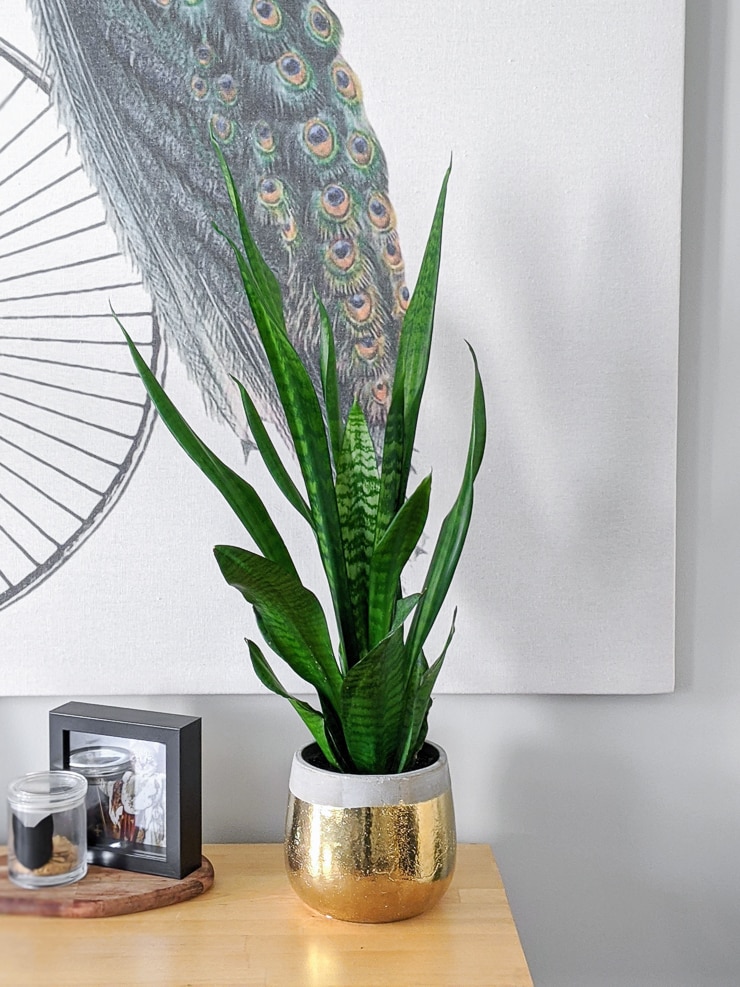
What are the different snake plant varieties? Here are 18 with photos!
There are many different snake plant species—about 70, in fact. Some snake plants are dark green with whitish stripes—both vertical and horizontal—while others have yellow edges or a red tint. Some are lighter green, while others are quite dark. “Twist” varieties have twisted leaves.
Depending on the variety, snake plants can grow up to several feet tall. I prefer the darker varieties of snake plants for that reason. The yellow-edge, red-tinted, and twisted varieties tend to not grow as tall. Here are a few different snake plant varieties you’ll likely encounter at your local nursery or big box hardware store.
1. Sansevieria trifasciata variety ID pics
The regular ol’ trifasciata variety is what you’re most likely to find when you’re out and about. It has dark green leaves with a lighter green or even gray-whiteish variegation on the leaves. The leaves are tall and thin, and the plants can get pretty large. Check out a few trifasciata plants I’ve got in my house.
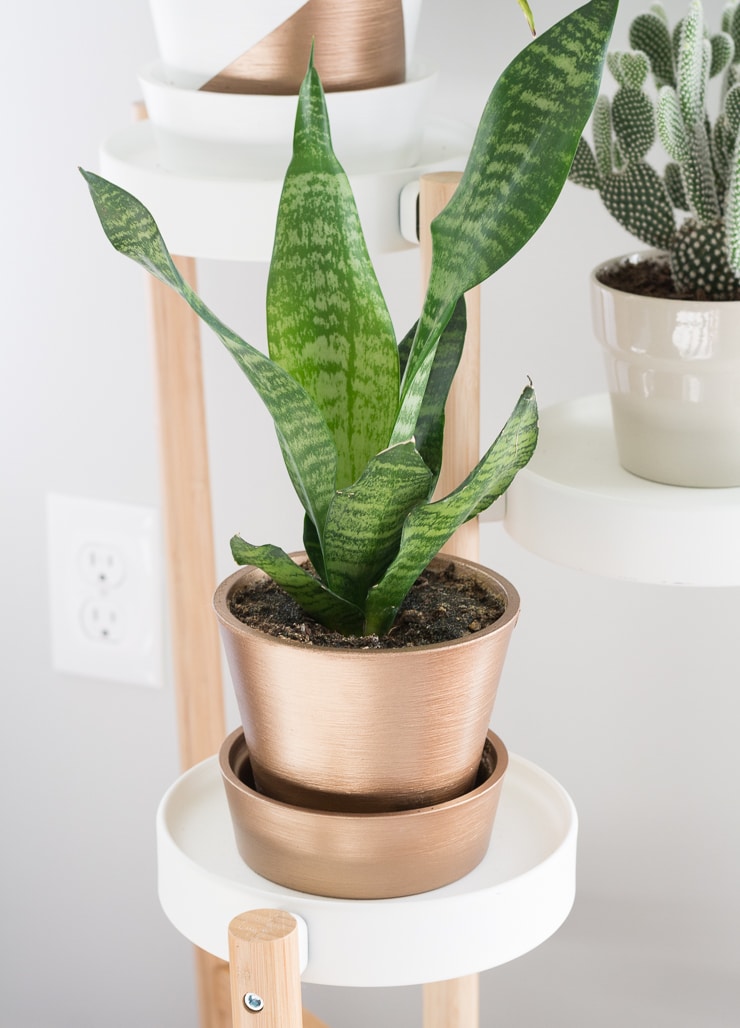
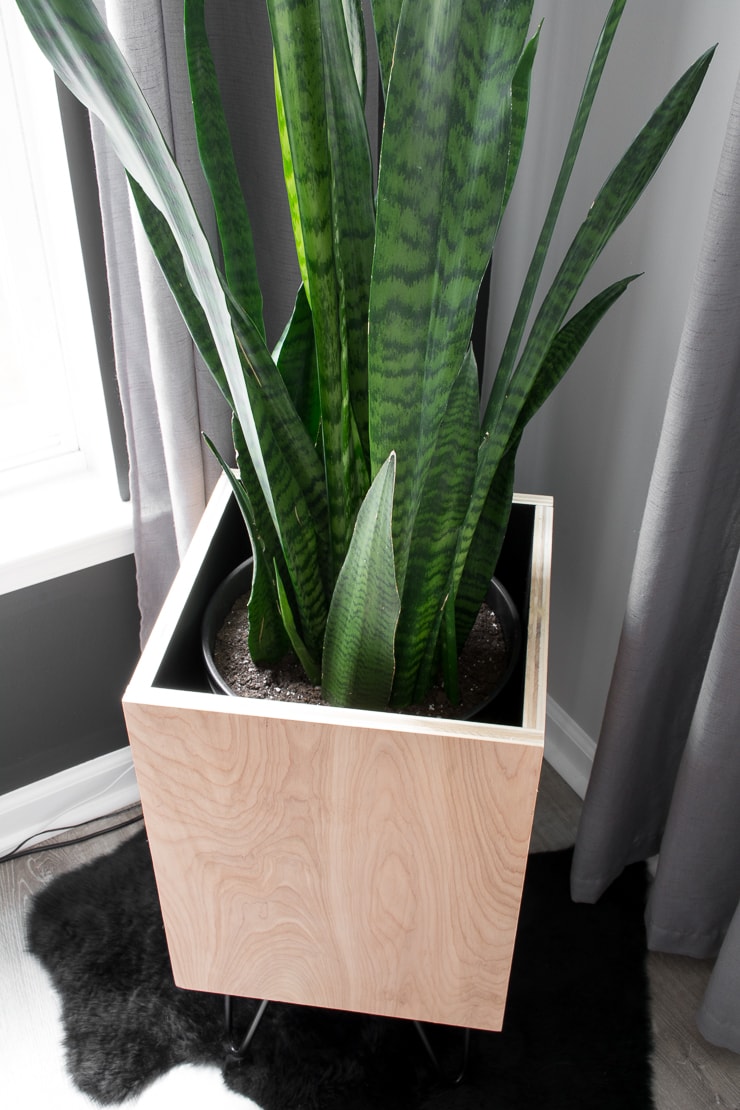

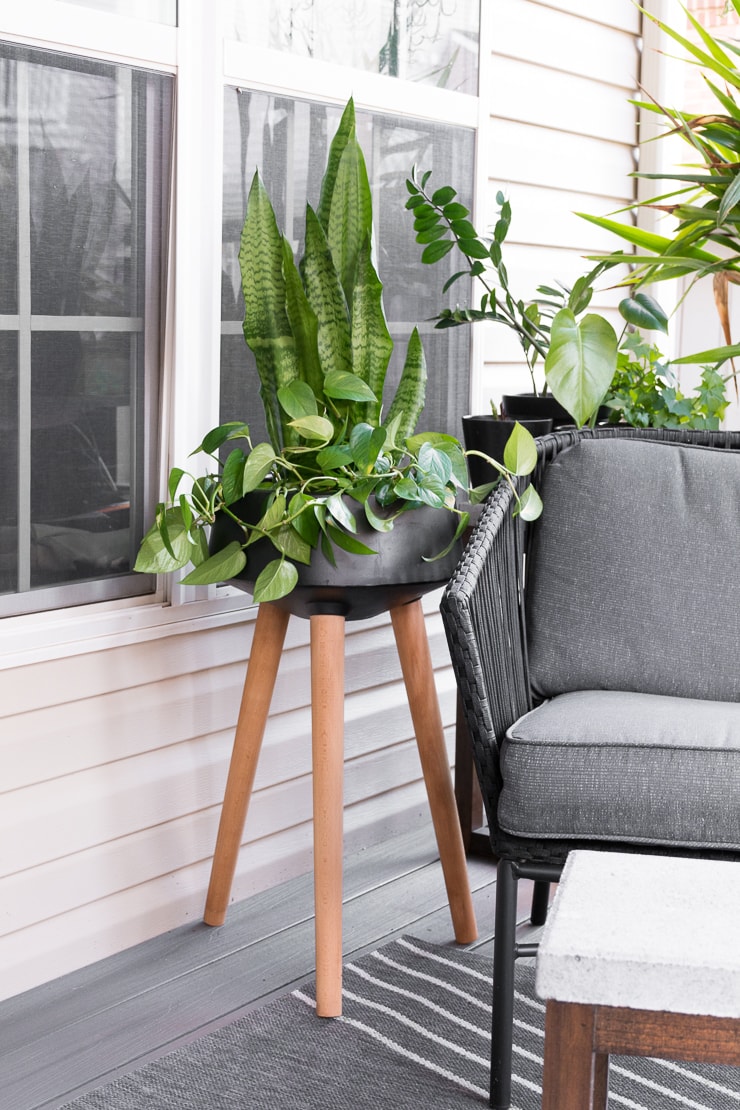
2. Trifasciata robusta variety ID pics
Trifasciata also has a “robusta” variety. This type of snake plant has pretty much the same markings as the regular trifasciata, but its leaves are larger. They are wider and chunkier—I love the look.
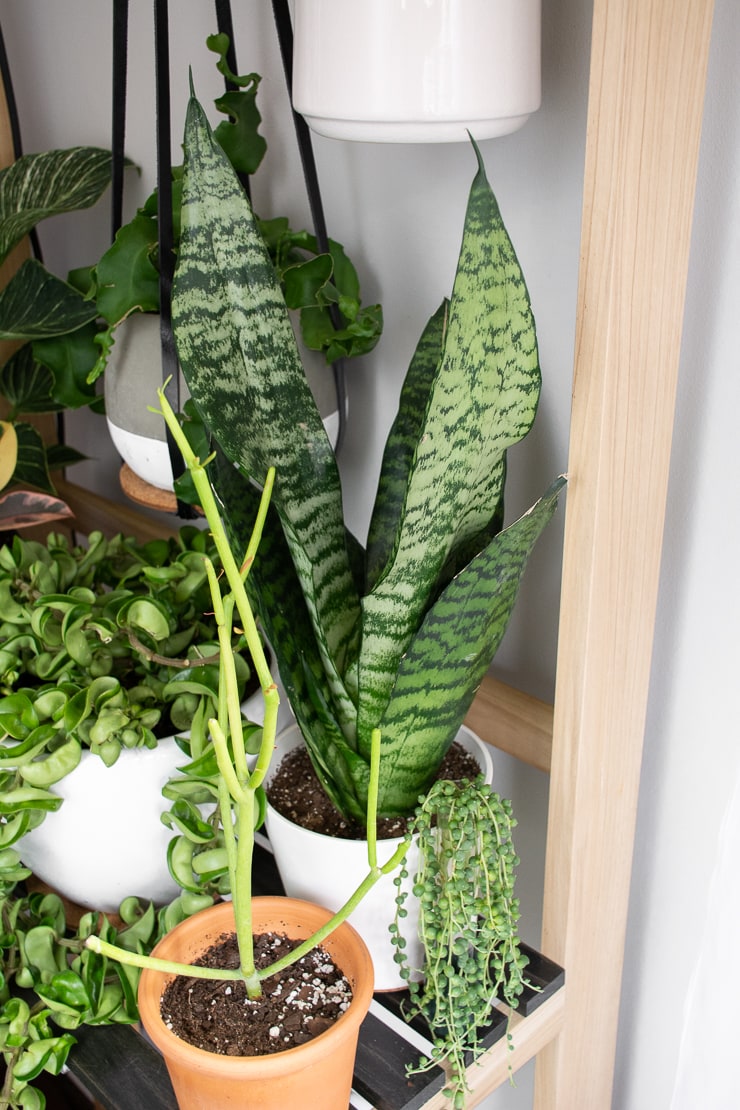
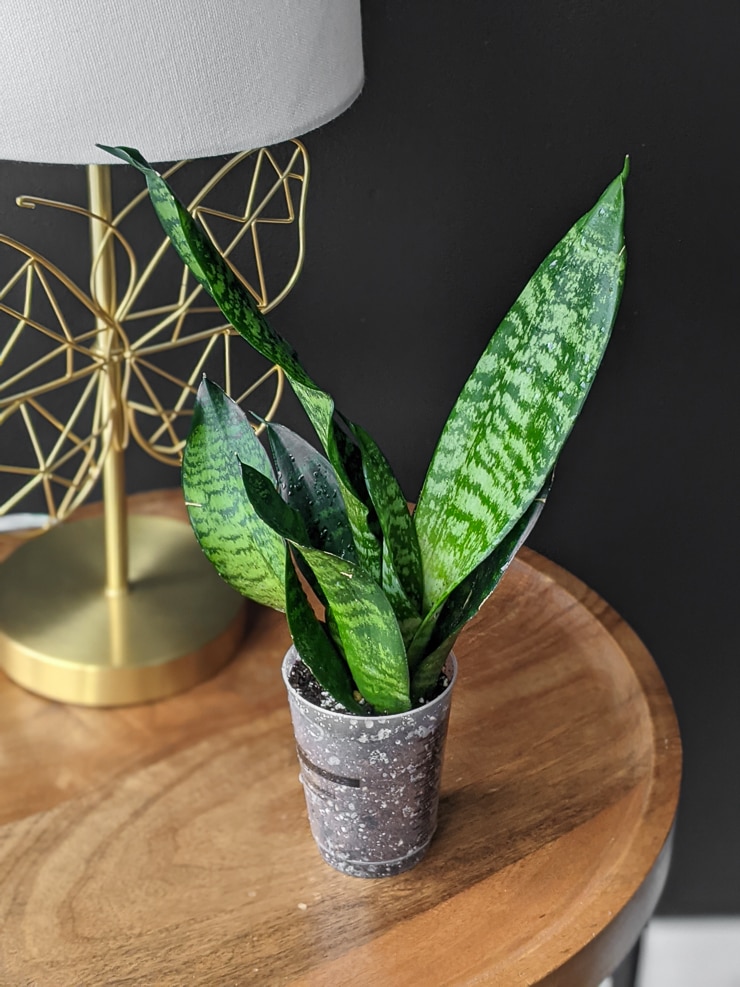
3. Trifasciata Laurentii variety ID pics
Trifasciata Laurentii is another variety you’ll likely find pretty easily. You’ll know it because it looks a lot like the regular trifasciata, but it has yellow edges. It also grows tall and thin, and the leaves aren’t wide like the trifasciata robusta variety.
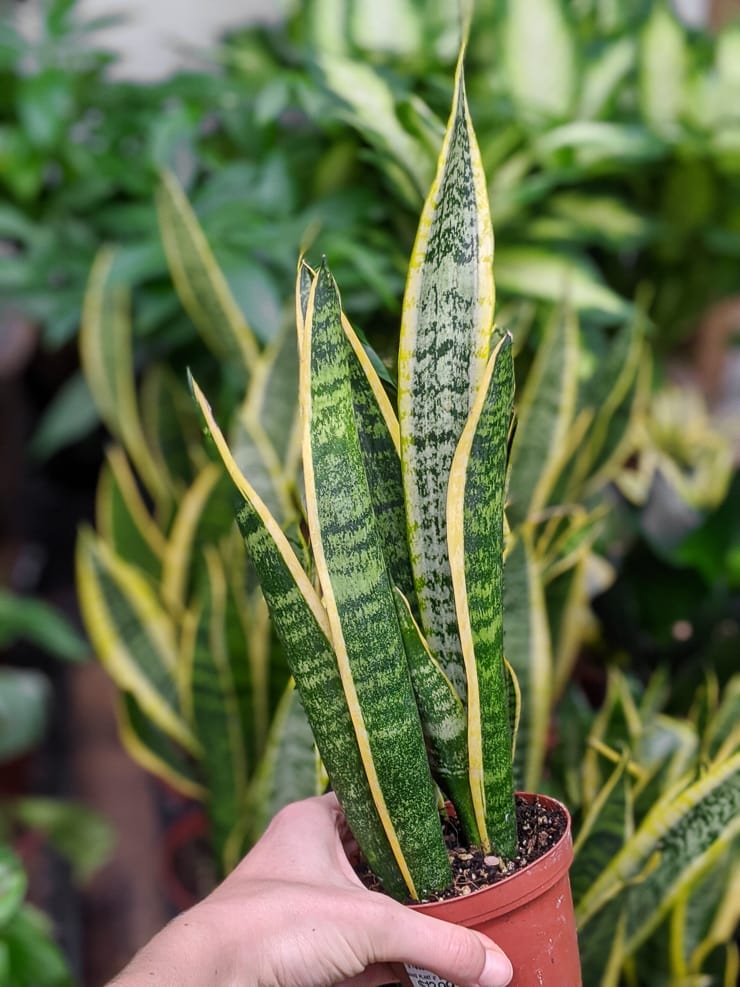
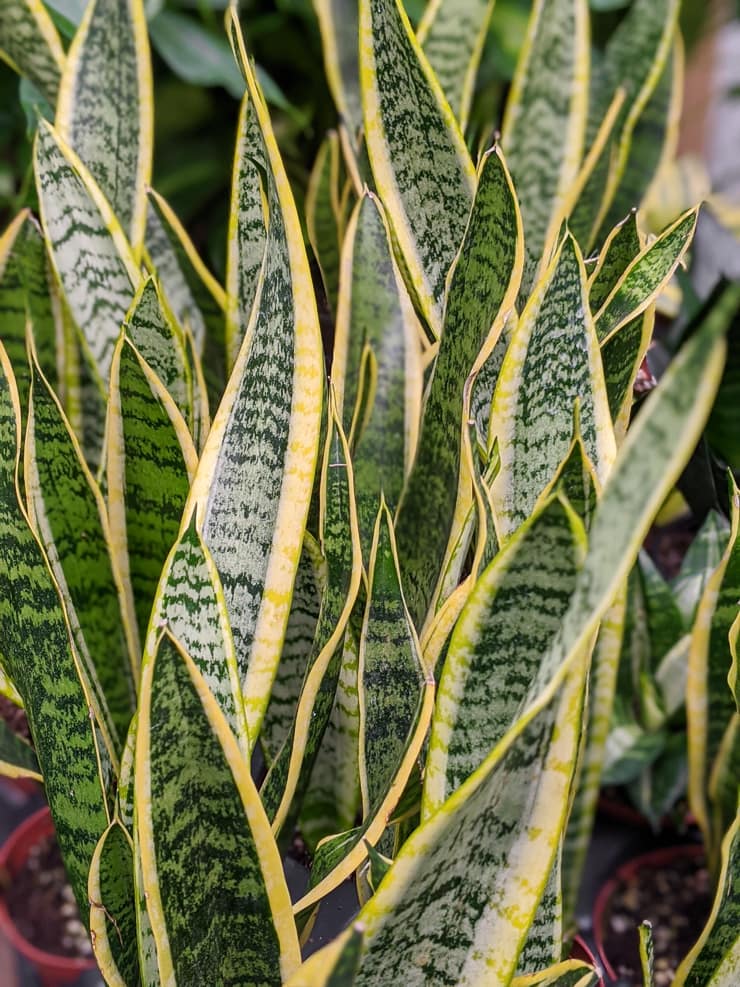
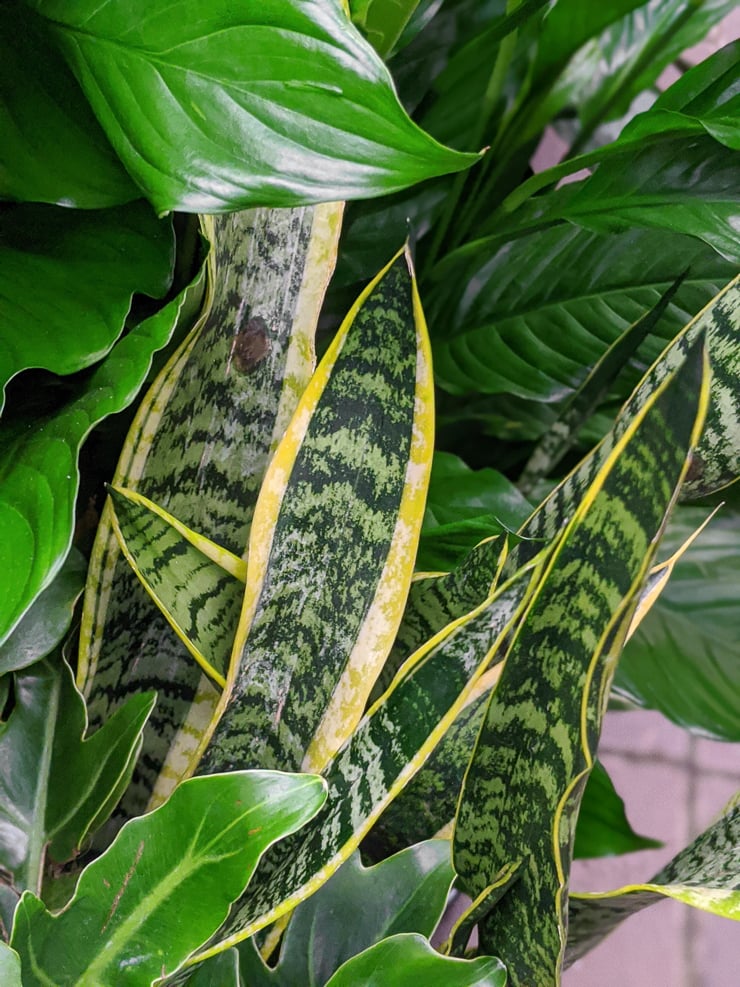
4. Trifasciata black coral variety ID pics
Trifasciata black coral is a gorgeous variety I’ve been trying to get my hands on for a while! I saw this one at a local nursery, but it was too big for me to take home (and a bit pricey). This variety grows to about 3 feet tall, and the dark green leaves have grayish-white horizontal “stripes.”
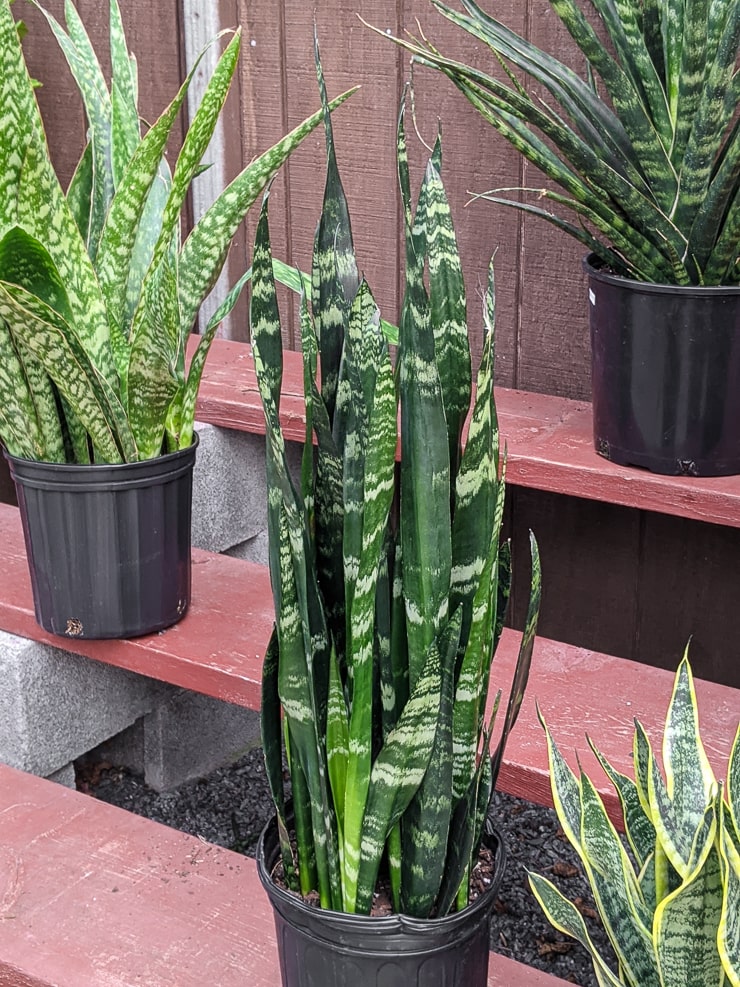
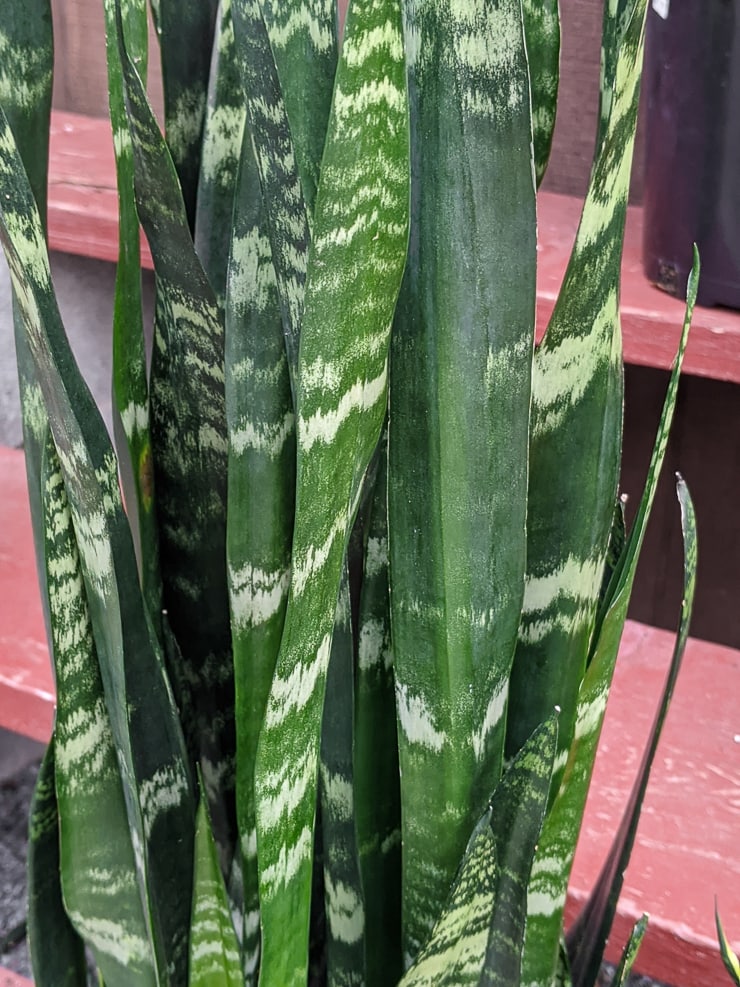
5. Trifasciata Whitney variety ID pics
I was super lucky to find a trifasciata Whitney at a local Lowe’s. The Whitney stays a bit smaller and has solid deep green leaves. The borders of the plant are a variegated light greenish-gray. A lot like the Laurentii variety, but not yellow. And it also stays a bit smaller. I found this for $10!
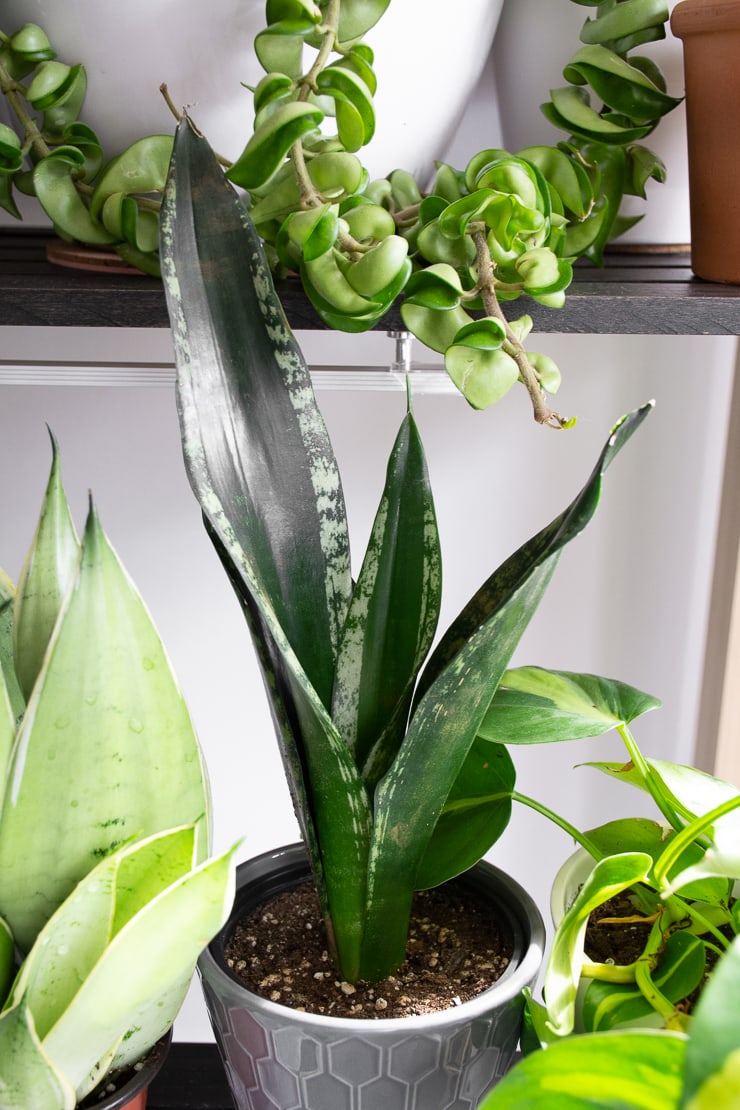
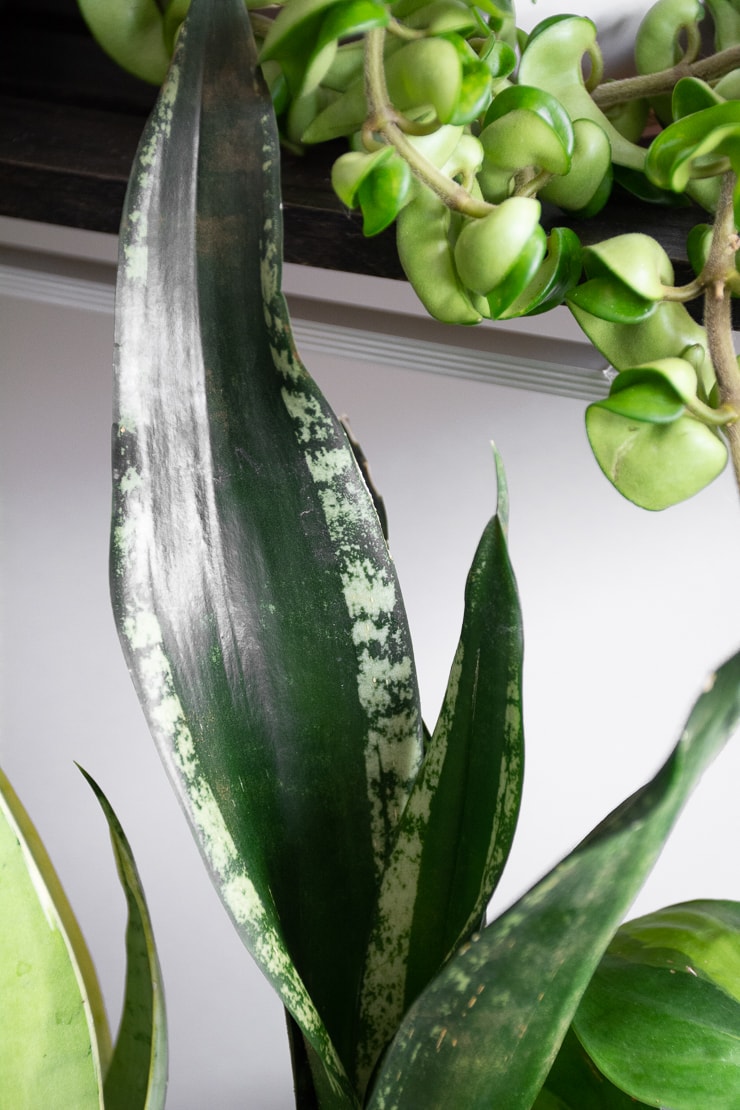
6. Trifasciata zeylanica variety ID pics
Zeylanica is another somewhat rare variety that I don’t see too often. It looks a lot like the trifasciata. I’ve read a lot about zeylanica and think that a lot of them are probably mis-marked and are really trifasciata. Here’s one I saw labeled at a nursery in northern Virginia.
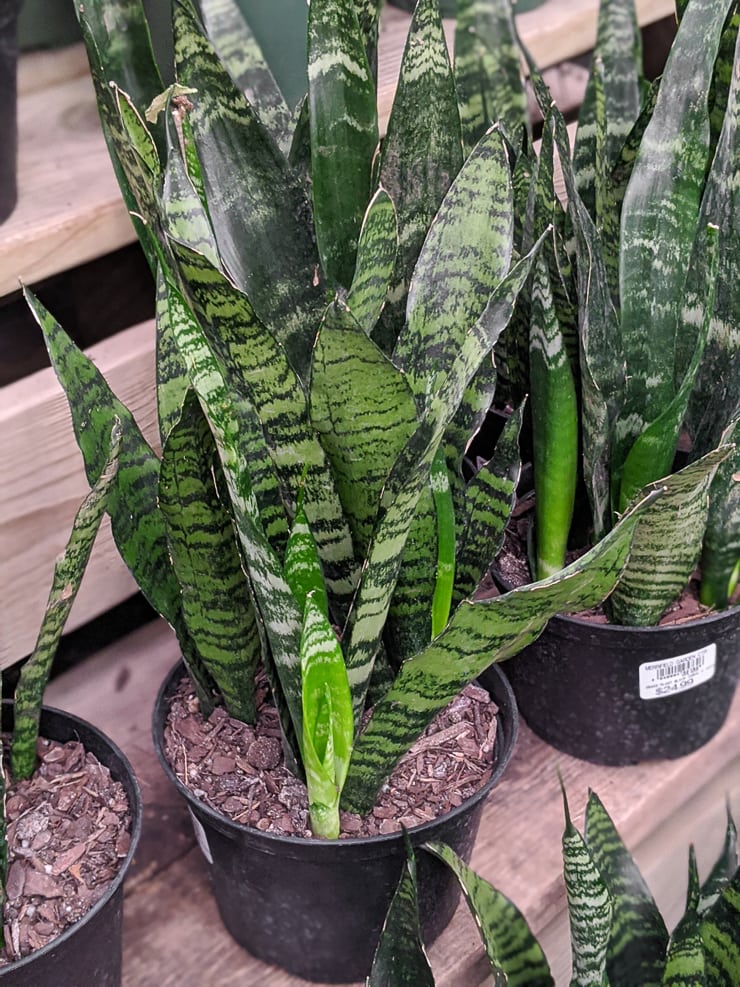
7. Trifasciata moonshine variety ID pics
I am absolutely obsessed with my trifasciata moonshine! I originally bought the cutting below off of Facebook for $10, but I have been seeing these pop up in nurseries over the last year. This variety has a gorgeous mint green color with very little variegation. The better the light on the plant, the lighter the color gets. Just stunning!
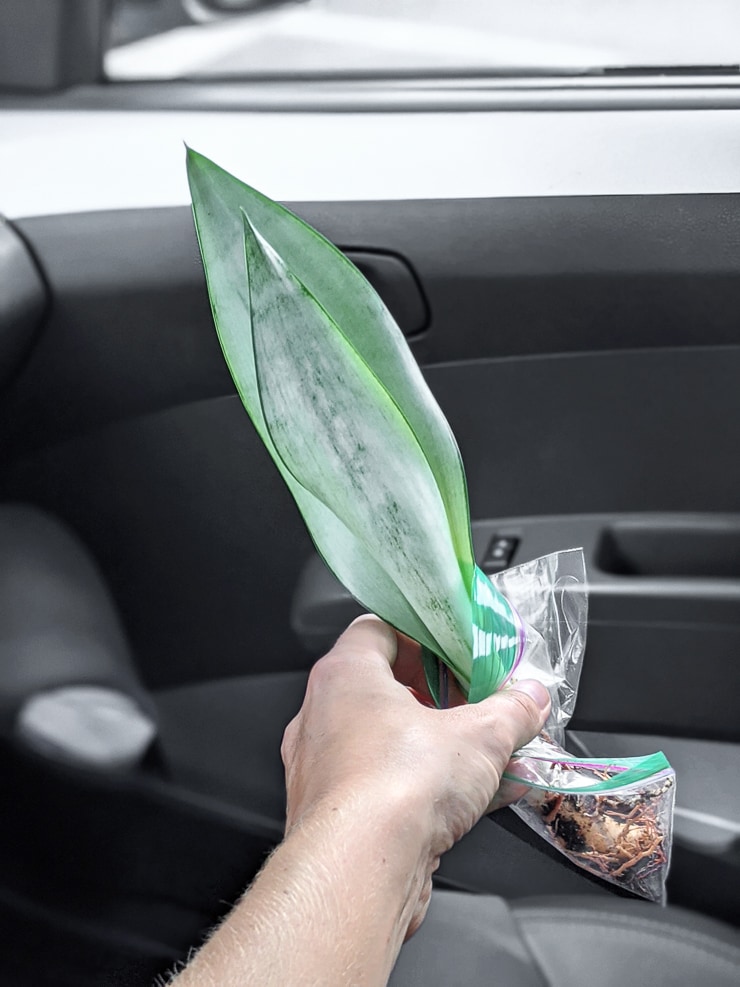
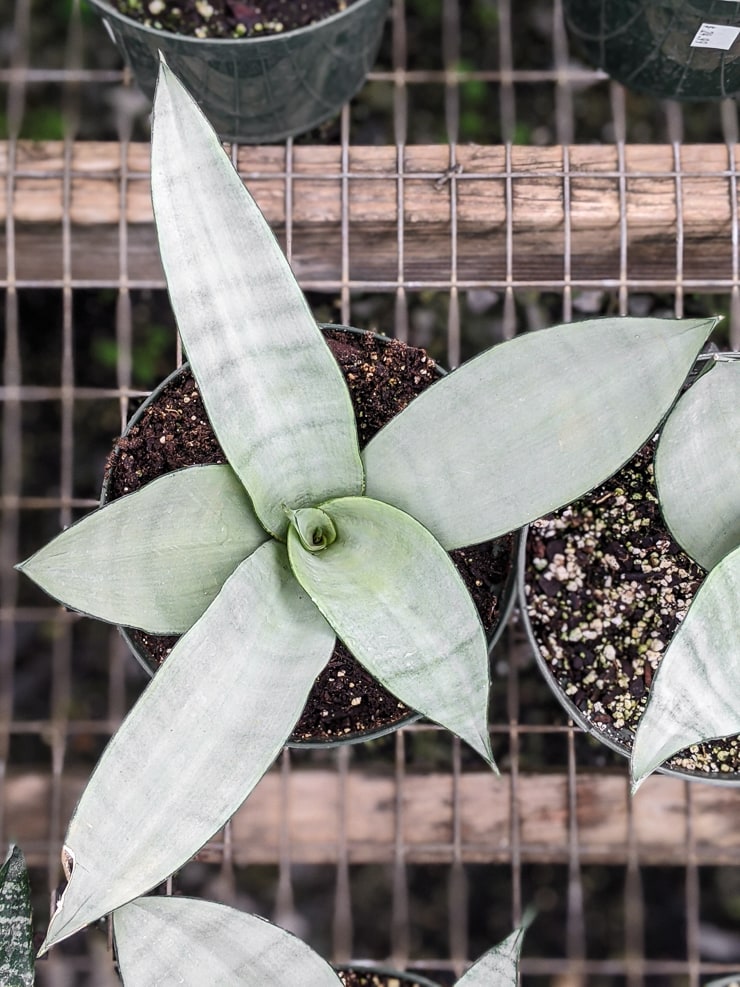
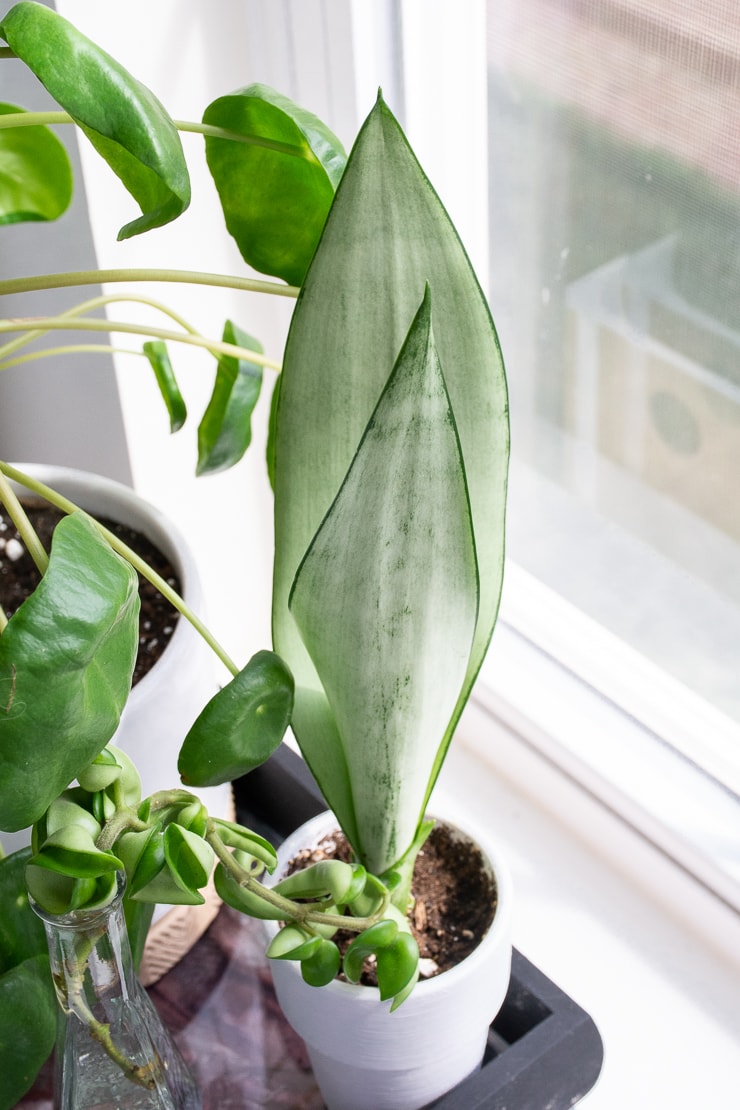
8. Trifasciata jaboa variety ID pics
The trifasciata jaboa is big and beautiful. Its leaves are tall, wide, and thick. They have a bit of an orangey-red tint to the borders, and they are highly variegated with a grayish-white and medium green. I saw this one for about 100 bucks at a nursery, and a friend of mine snagged a huge one at Home Depot recently for under $50.
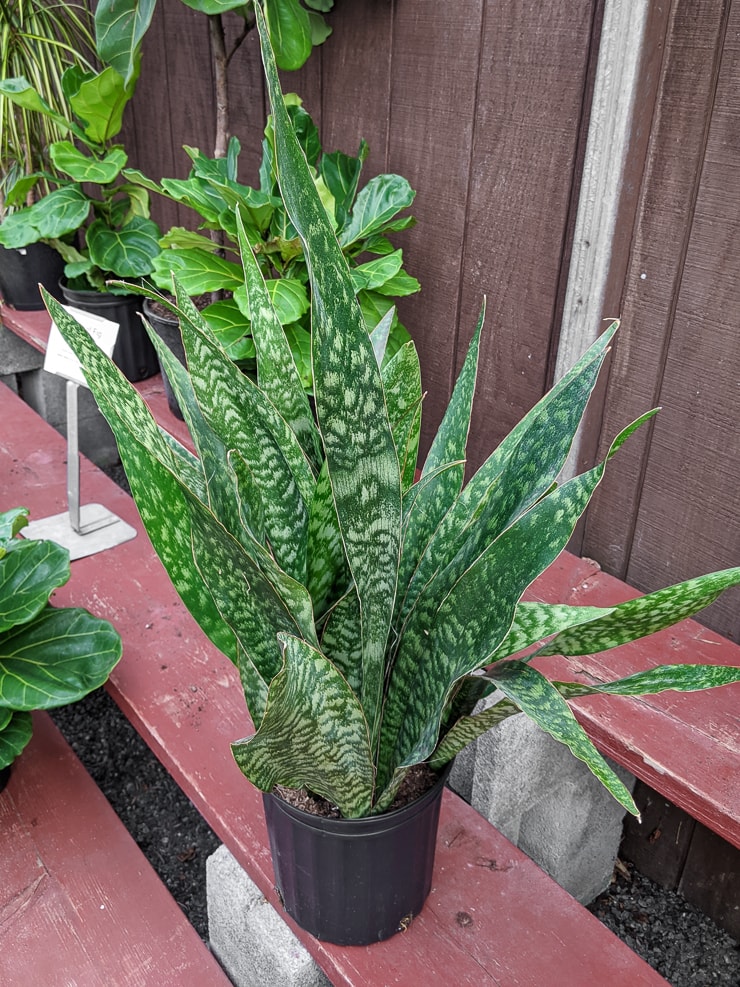
9. Trifasciata hahnii robusta variety ID pics
Now let’s talk about some hahnii varieties. Hahnii snake plants are also referred to as “birds nest” snake plants because they are shorter, stout, and grow more in clumps. The clumps are often very crowded together as you can see below.
The hahnii robusta, pictured below, is basically a lot like the trifasciata and trifasciata robusta, except is has the short, stout, and highly clumped “hahnii” characteristics.
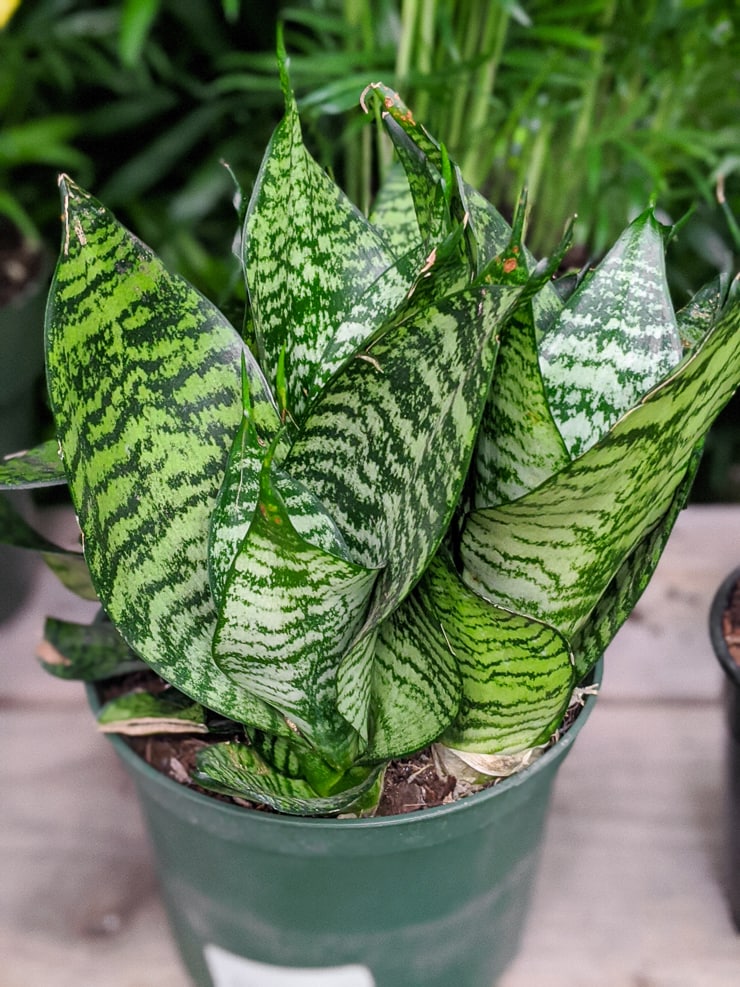
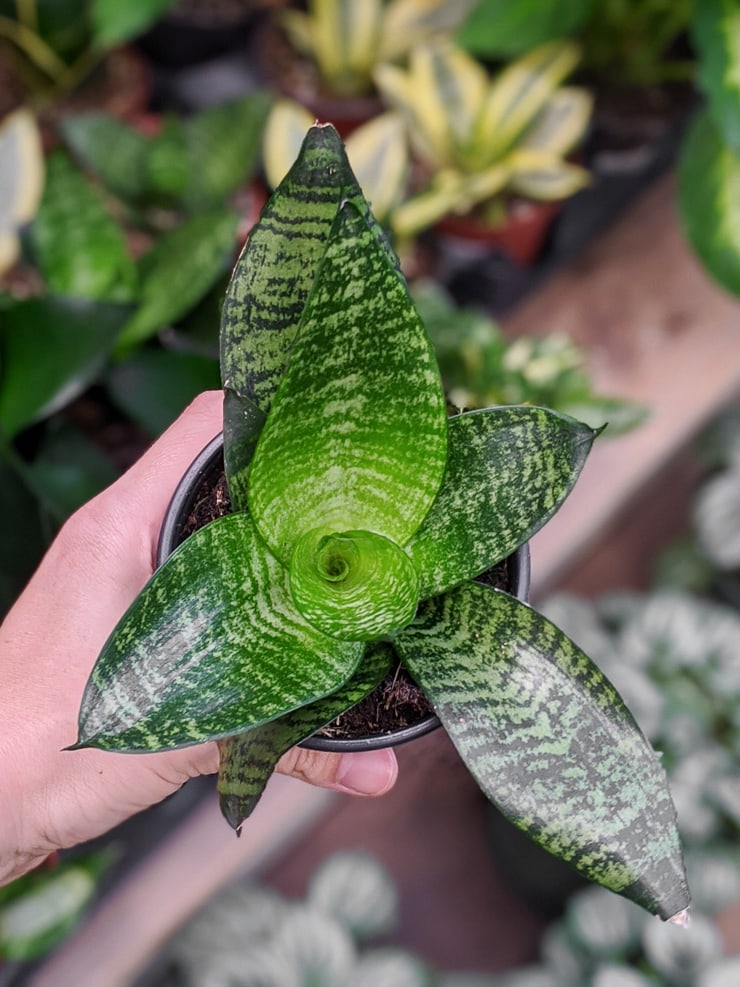
10. Trifasciata “golden hahnii” variety ID pics
The “golden hahnii” is very similar to the robusta hahnii in its inner appearance. Appropriately named—when it’s mature, it is often more yellow than even green. But most of these plants are a mixture of yellow and green.
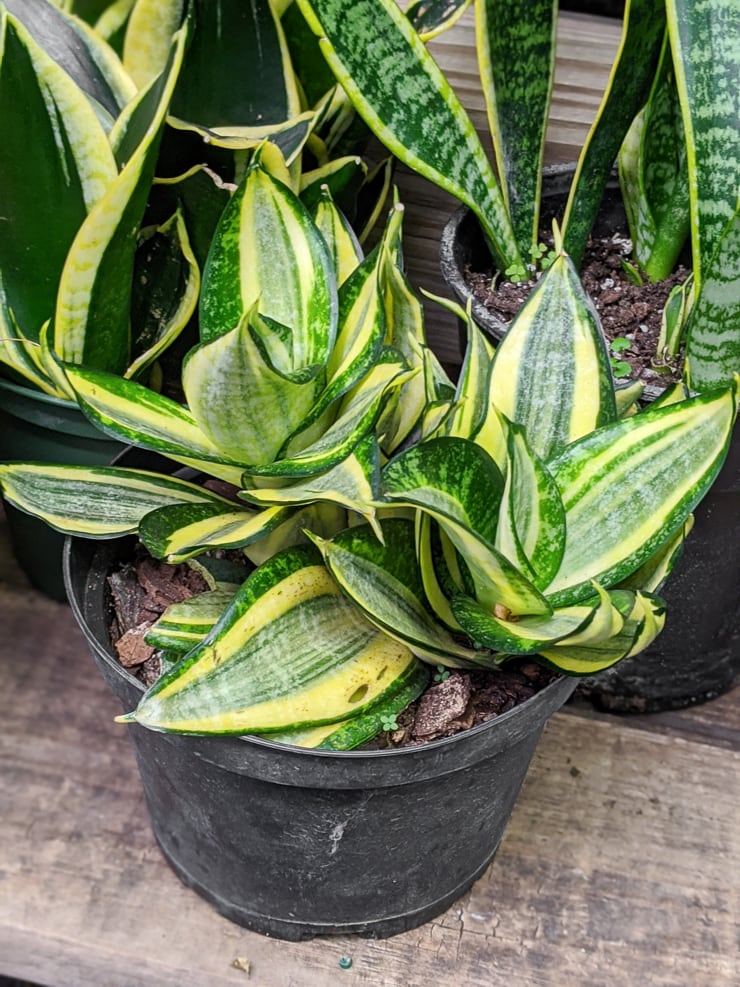
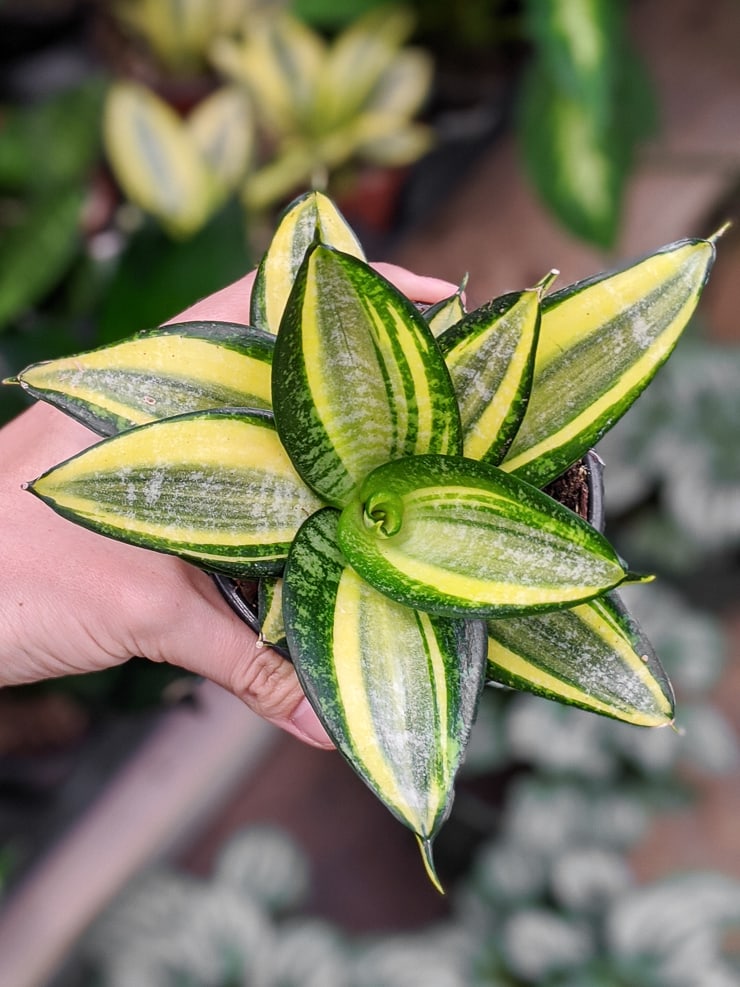
11. Trifasciata hahnii black gold variety ID pics
“Black gold” hahnii snake plants look very similar to “golden hahnii” varieties. The black gold variety, however, has a deep green interior—almost black sometimes. The borders are a golden yellow.
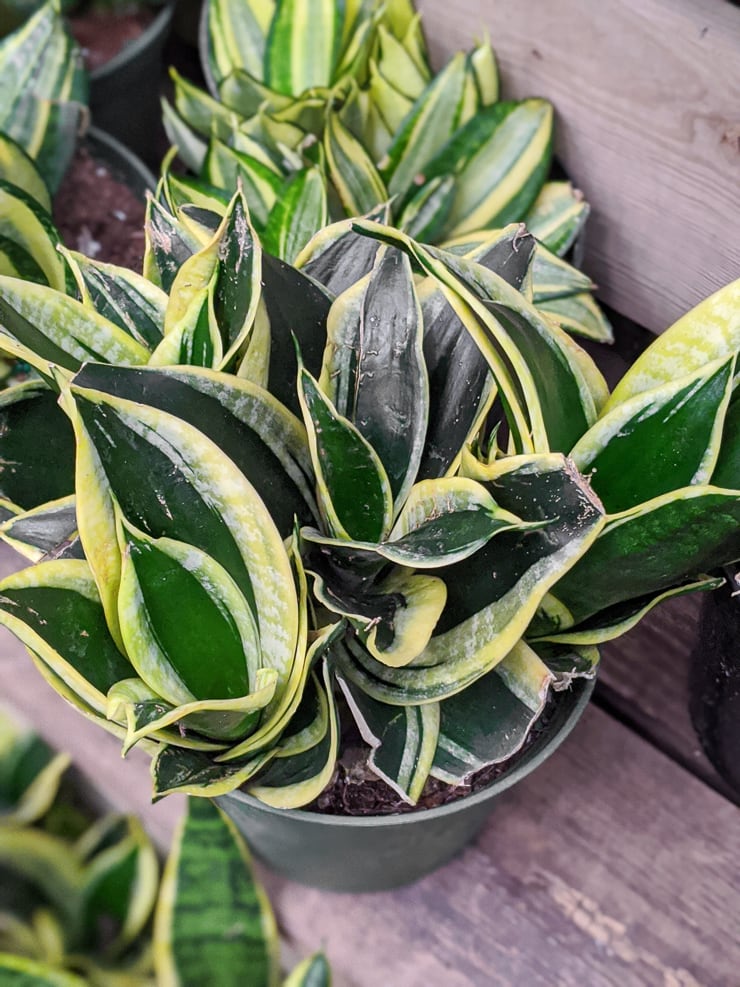
12. Trifasciata hahnii jade variety ID pics
The jade variety has a a deep coloring as the leaves mature. I have even seen the plant labeled as “black” since it can get very dark. This one does not have variegation, but it can have some color fading from dark to light as the plant grows.
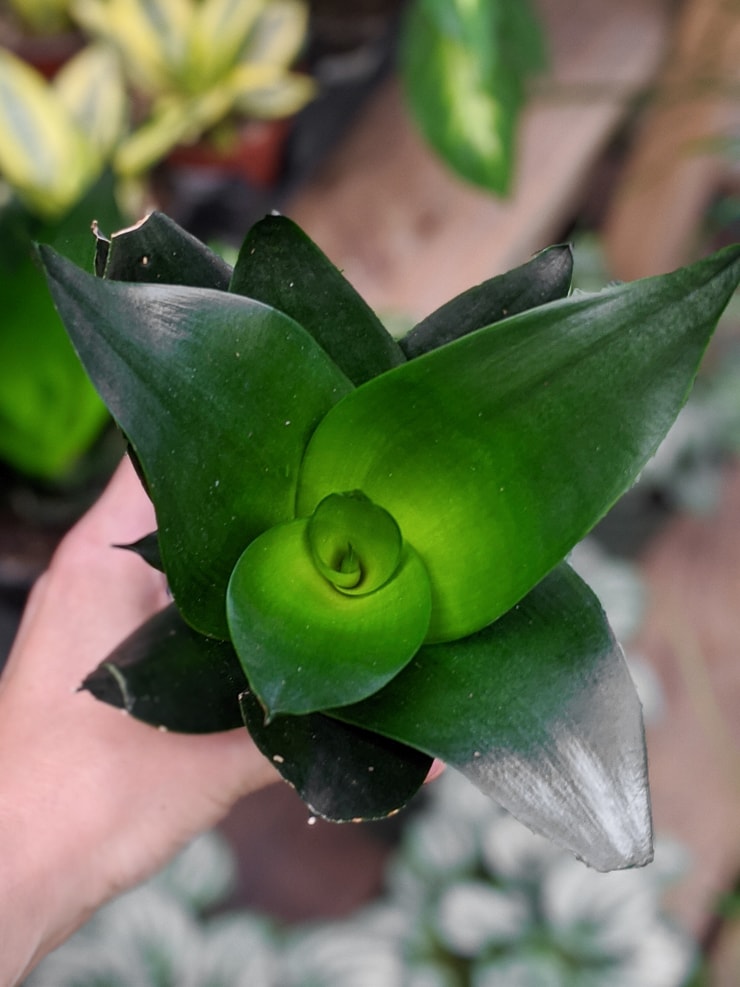
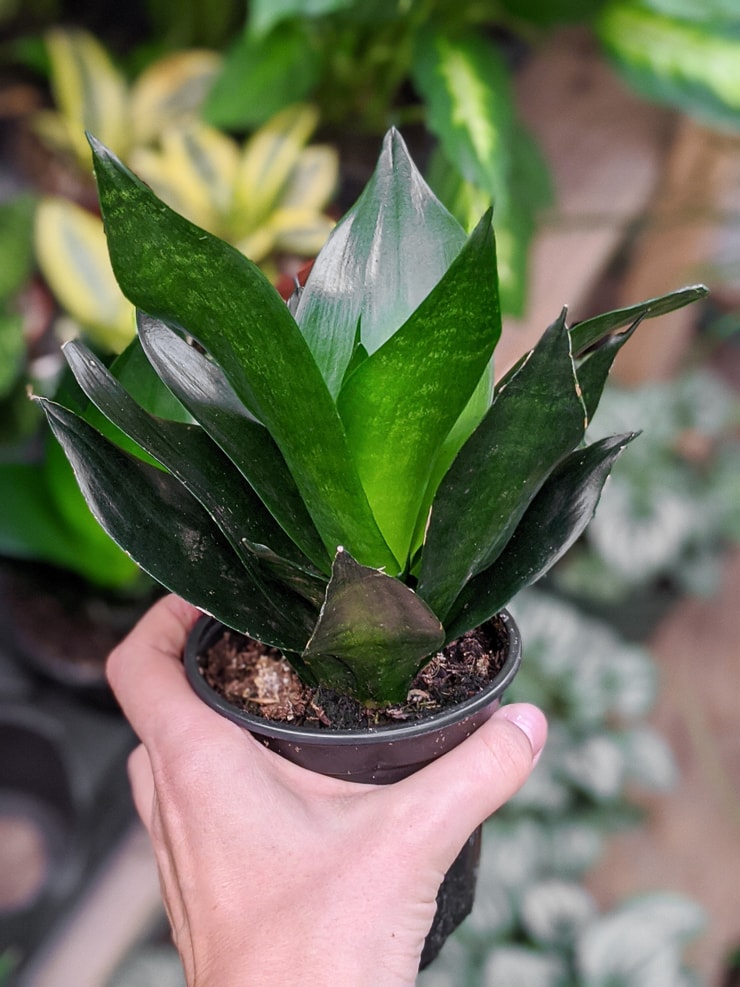
13. Trifasciata hahnii night owl variety ID pics
The hahnii night owl is often confused with the moonshine. But since it’s a hahnii, it’s a totally different type of plant. The night owl also has a much lighter color, but unlike the moonshine, it has a border. The border has a big of a yellowish color, so it isn’t as true of a mint green as the moonshine is.
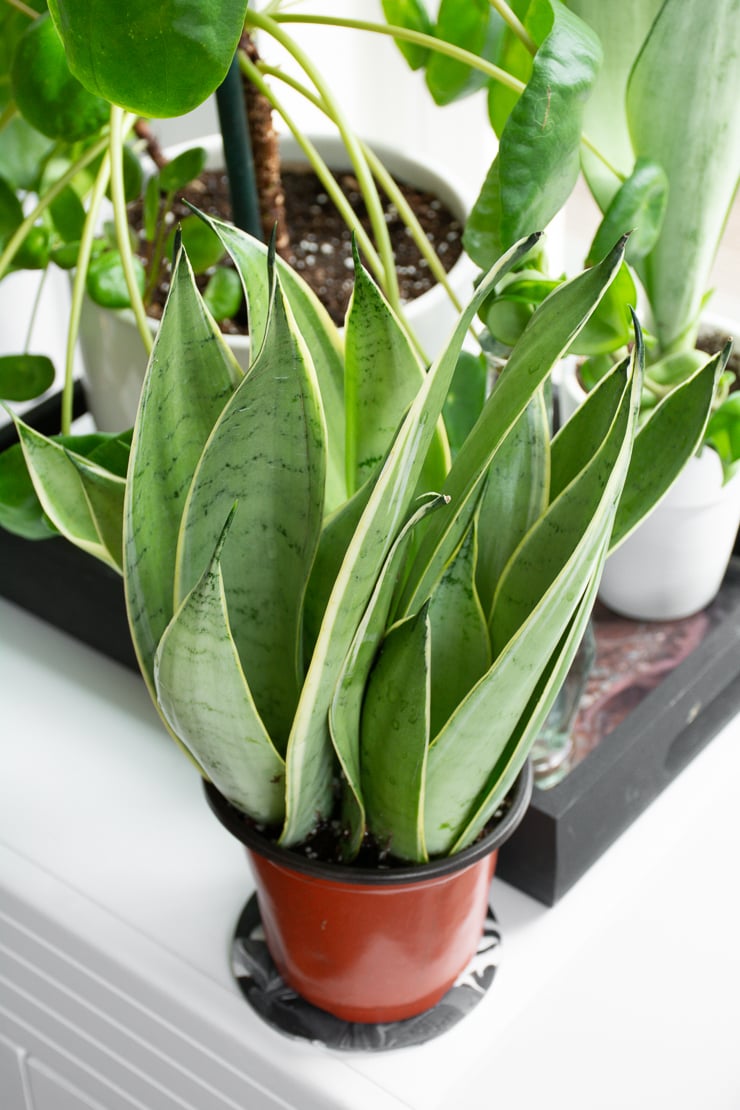
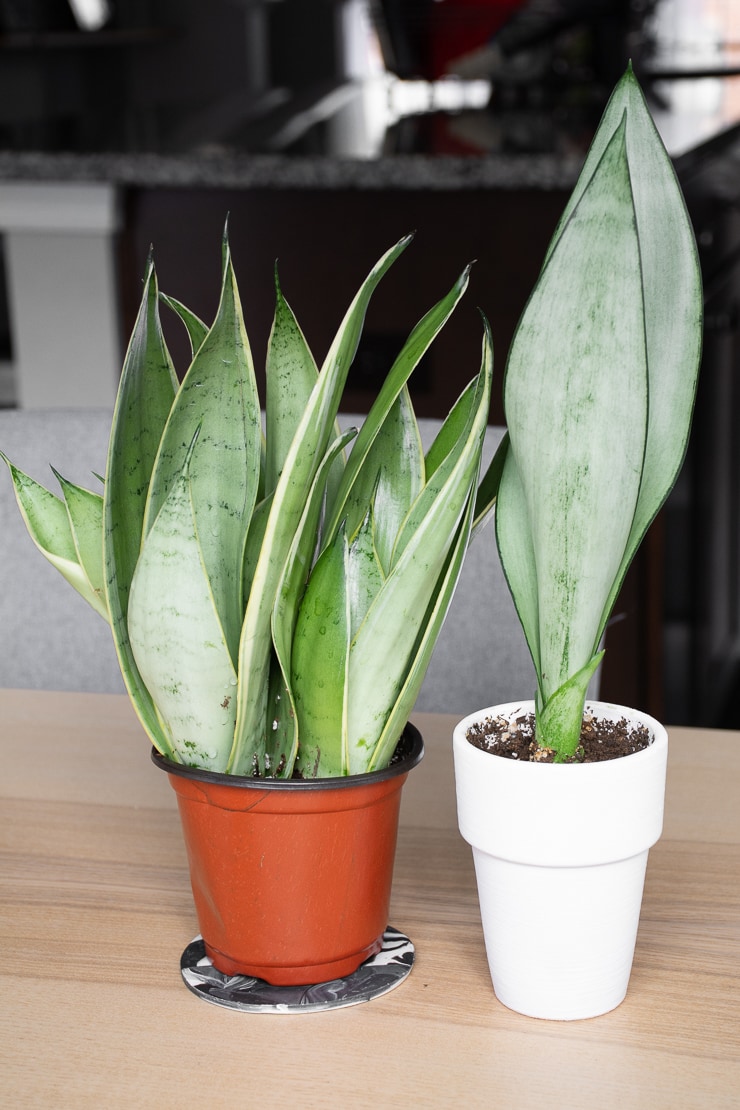
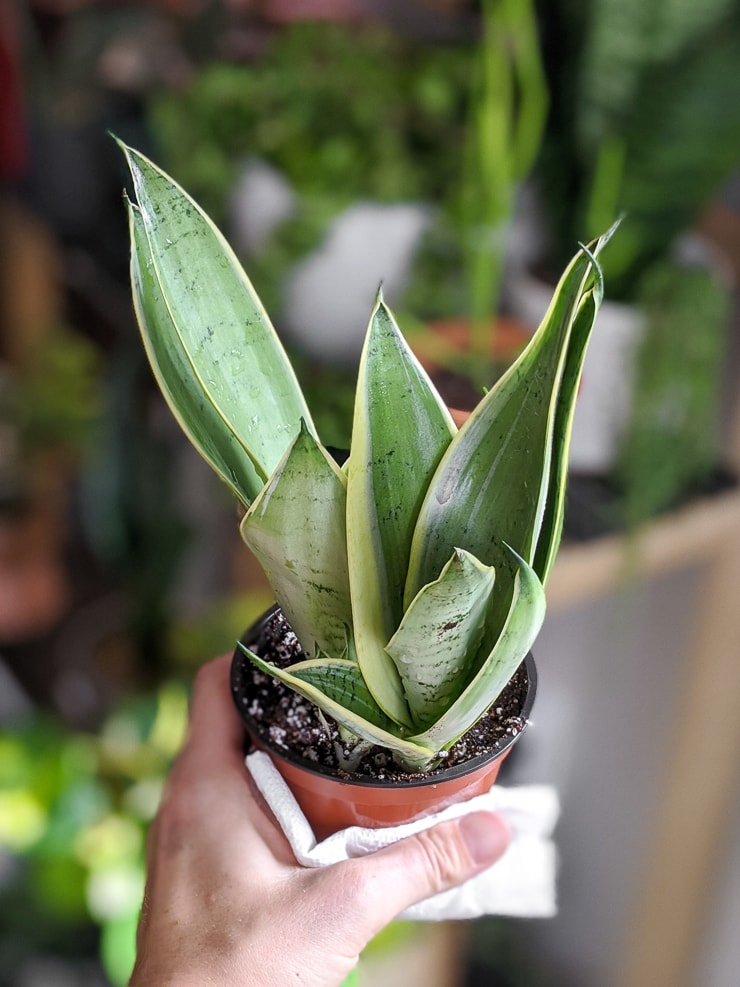
14. Trifasciata Bantel’s Sensation variety ID pics
Now onto a couple more rare and interesting varieties of snake plants before we move on to take stuff. The Bantel’s Sensation variety has tall, very thin leaves. The leaves are a mixture of the normal snake plant variegation and tall, thin stripes. Bantel’s Sensation is a grayish-silver and deep green. Truly stunning.
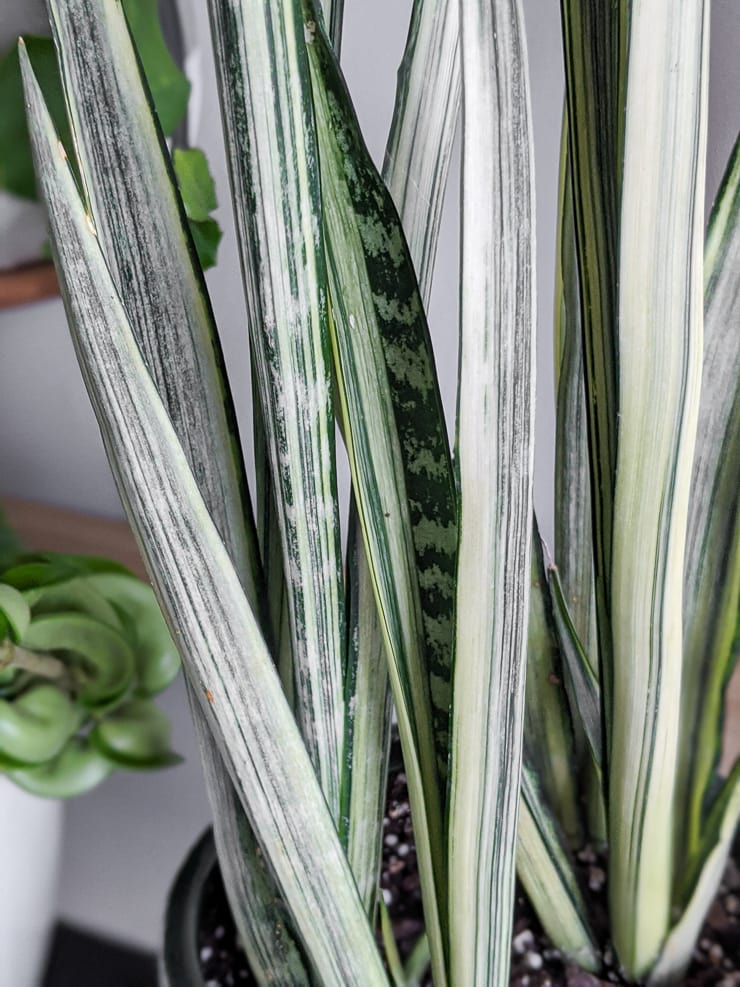
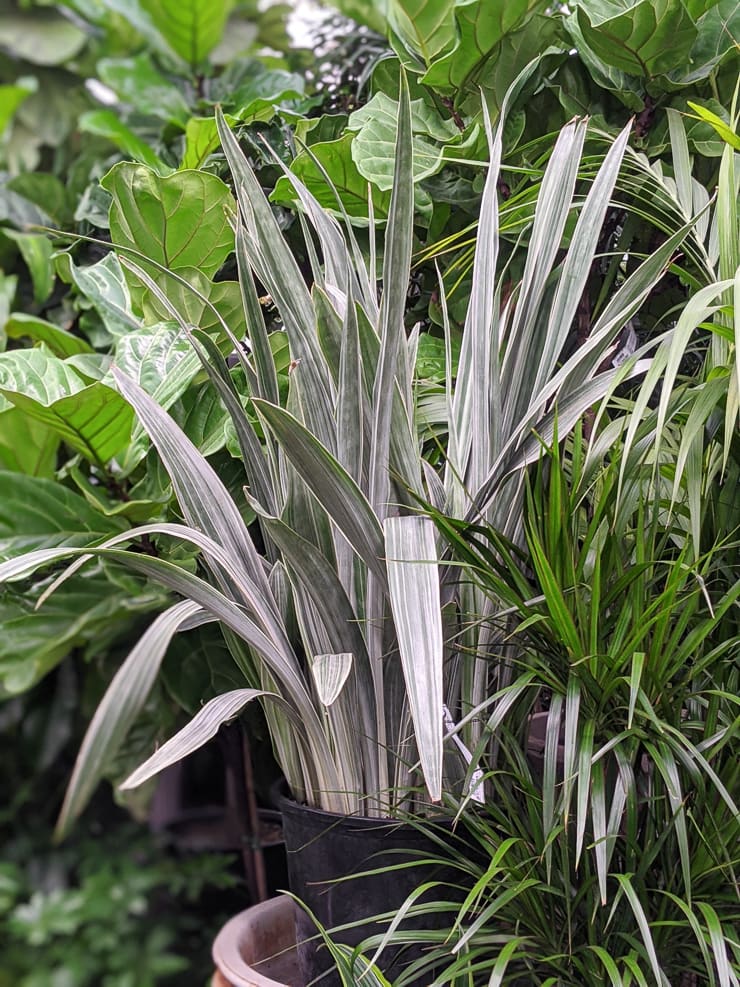
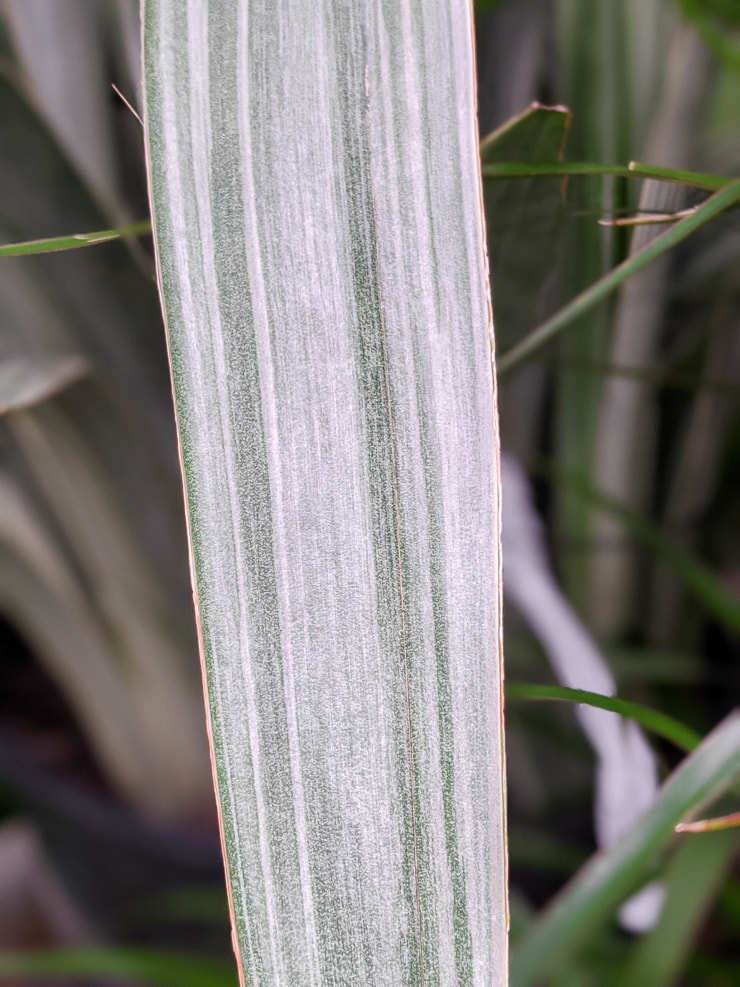

15. Trifasciata cylindrica variety ID pics
Cylindrica varieties look a lot like other snake plants in terms of their coloring and variegation. But the leaves are shaped like…you guessed it…cylinders. The cylinders have a pointy tip, and they have a somewhat rough surface. Here are a few different types of trifasciata cylindrica plants. I will be honest, not my favorite—but to each their own!
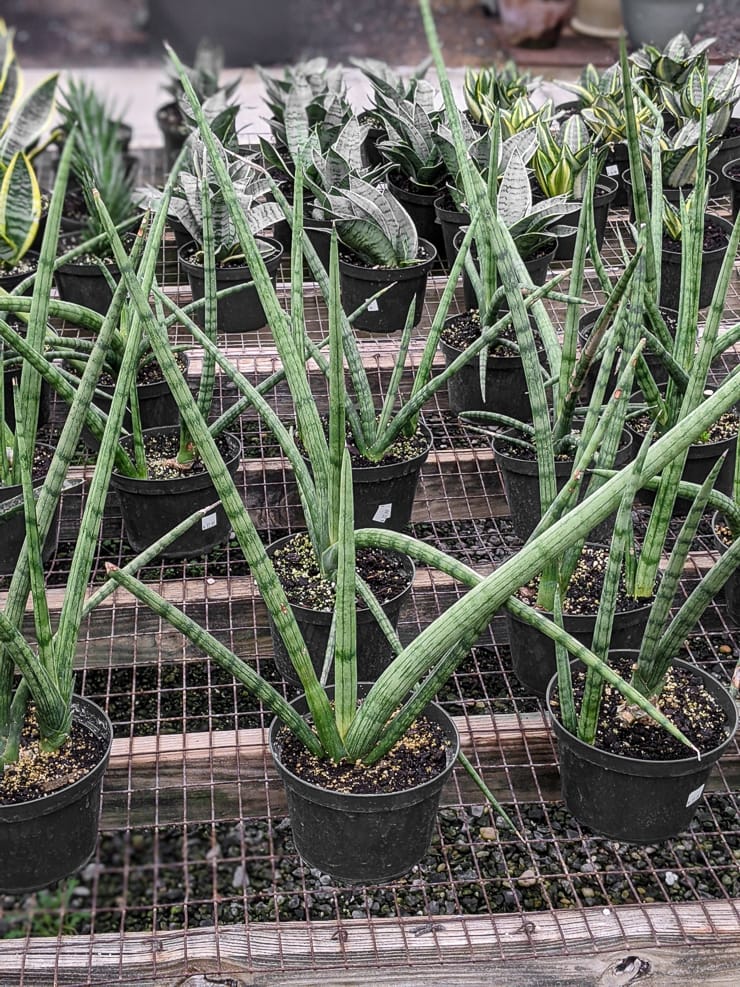
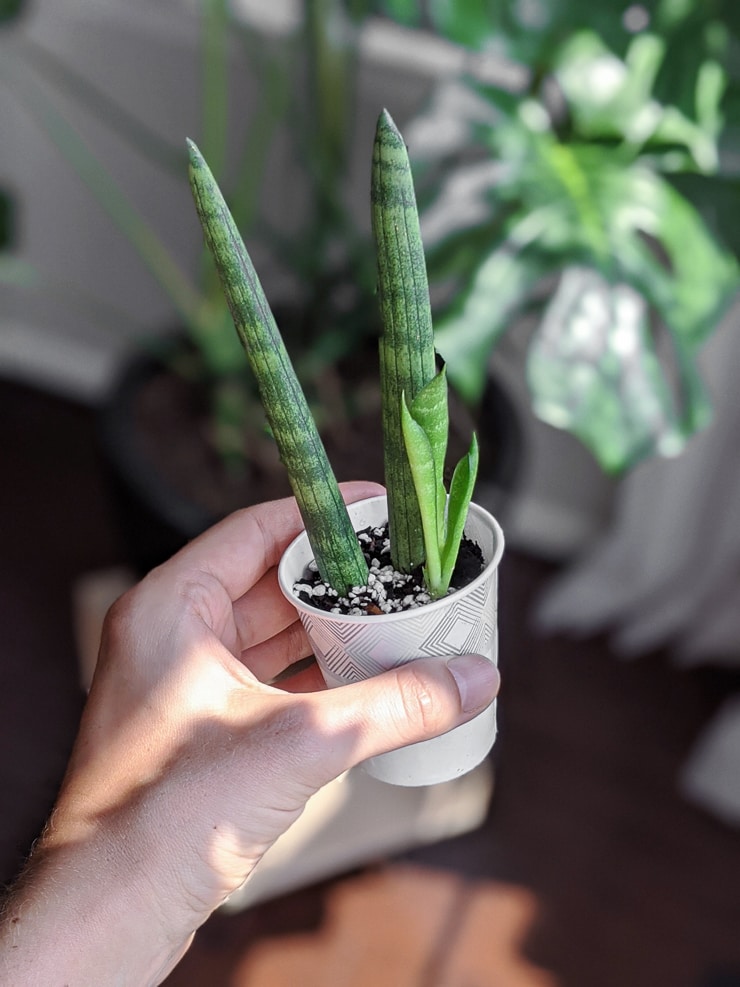
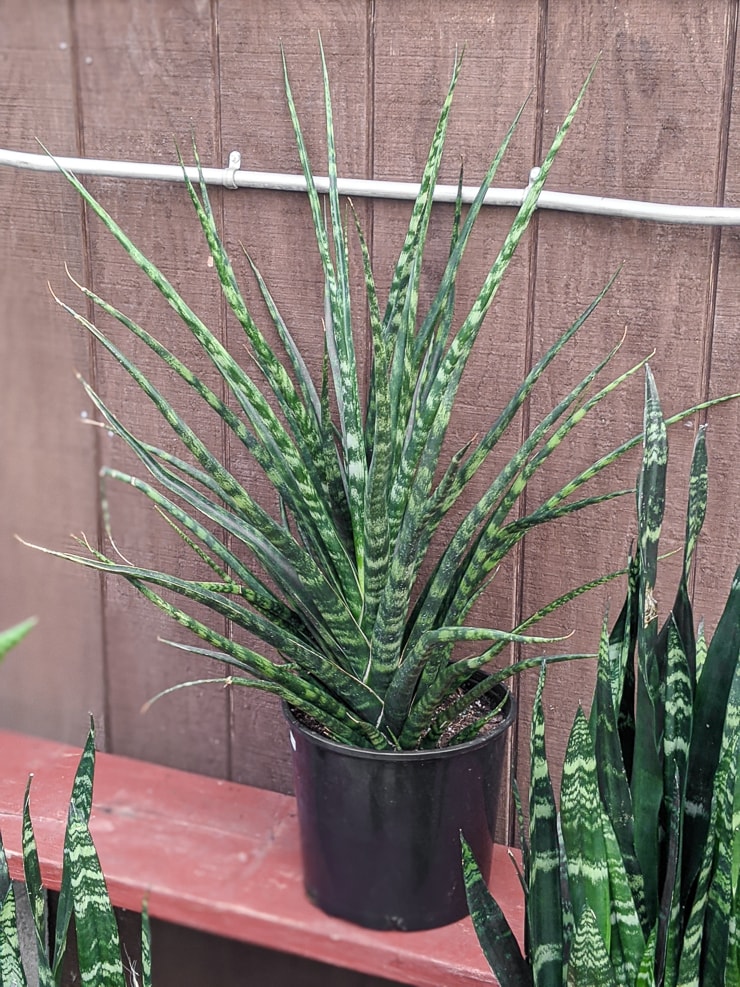
16. Hyacinthoides “grandis” variety ID pics
There are three more varieties of snake plants I want to spotlight that aren’t trifasciata. They are sansevierias (or dracaenas, or whatever), and the first is sansevieria hyacinthoides “grandis.” I bought mine at a local nursery and have found it’s a bit on the rare side. I bought it hoping it was a whale fin snake plant, but alas—just another big variety!
The leaves have a reddish-orange border, much like the jaboa variety (see above in this post). I loved seeing the two babies sprout up from this mother plant. It took almost a year, so it was all the more rewarding!
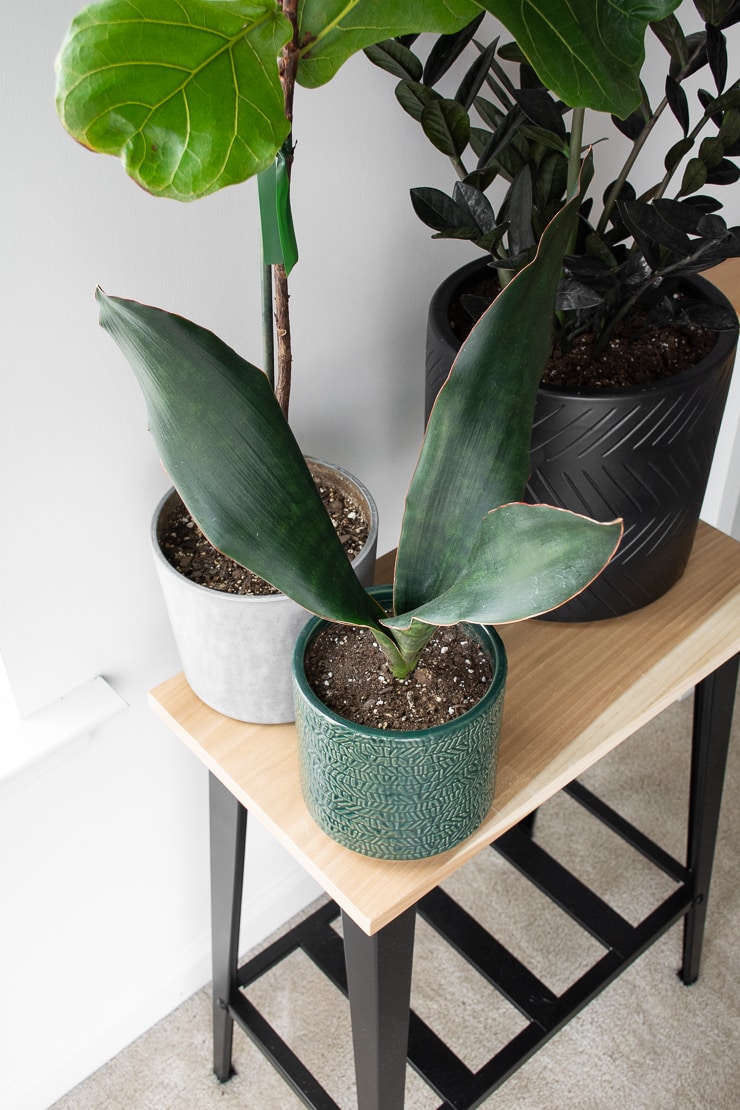
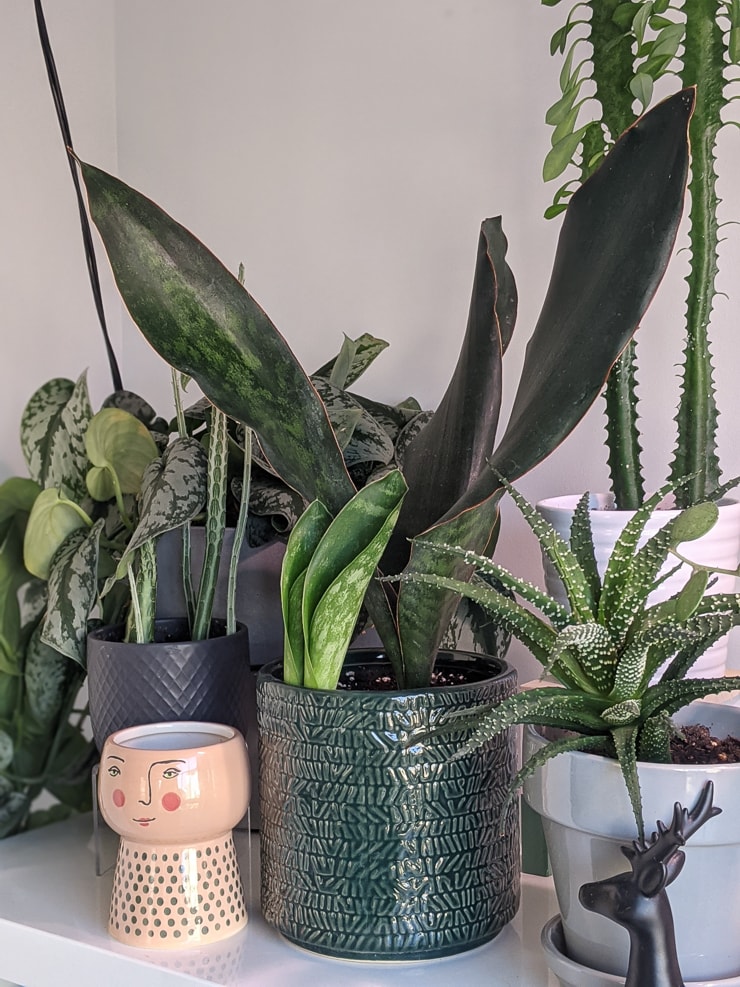

17. Sansevieria masoniana “whale fin” variety ID pics
The second non-trifasciata variety I want to spotlight is the sansevieria masoniana, aka the “whale fin snake plant.” Wanna know why they call it that? Because it’s freaking huge, like a whale’s fin. Here’s a huge one for $200 at a local nursery…and then below that, my little guy I got from a local person.
I also have a post all about how to care for a propagate whale fin snake plants specifically. I just love them that much 🙂
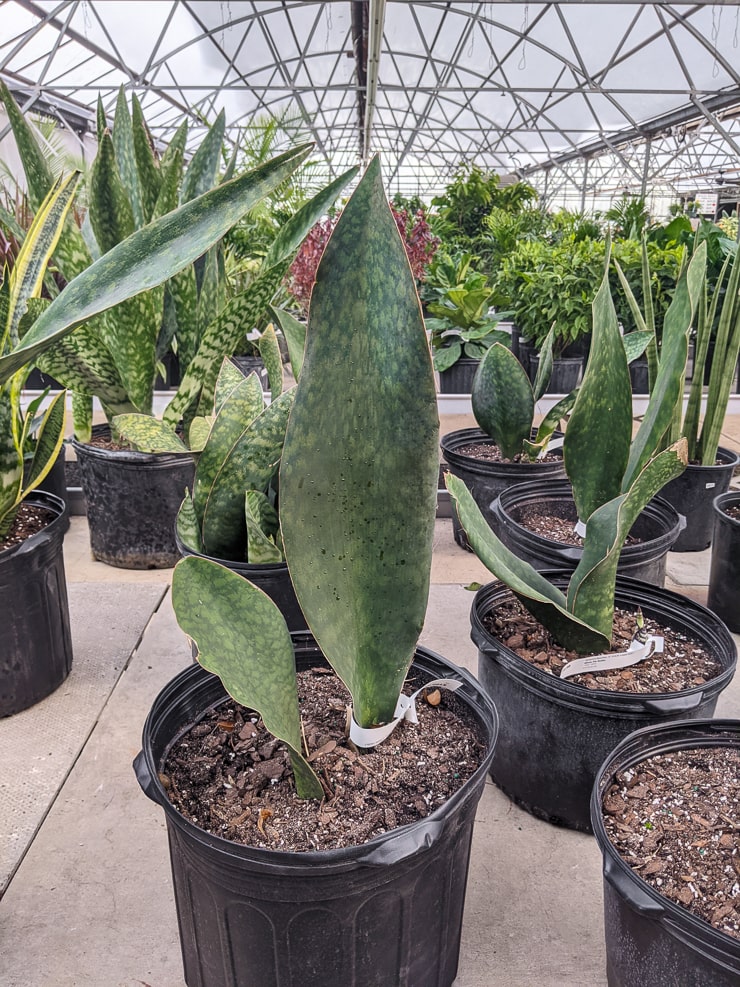

18. Sansevieria ehrenbergii “Samurai” variety ID pics
Here’s the last of the non-trifasciata varieties I want to spotlight: Sansevieria ehrenbergii, aka Samurai. These look a lot like cylindrical snake plants in some ways, but the unique shape give them a different feel. As the leaves grow, they create a fan shape. This is a very slow grower. But worth the wait—isn’t this cool looking?
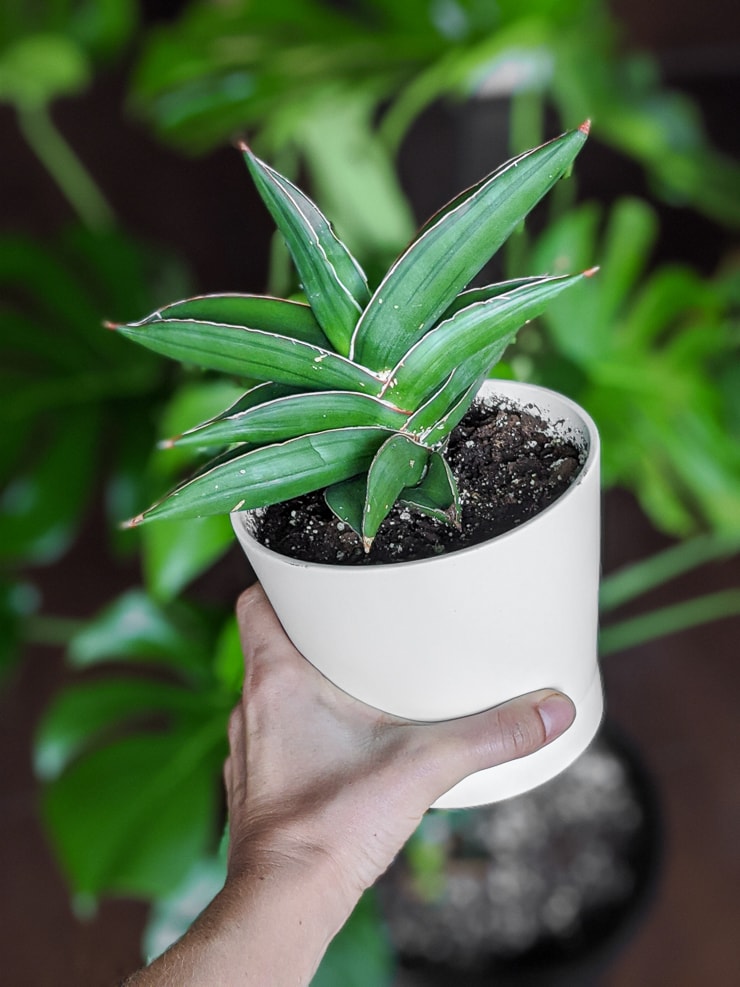
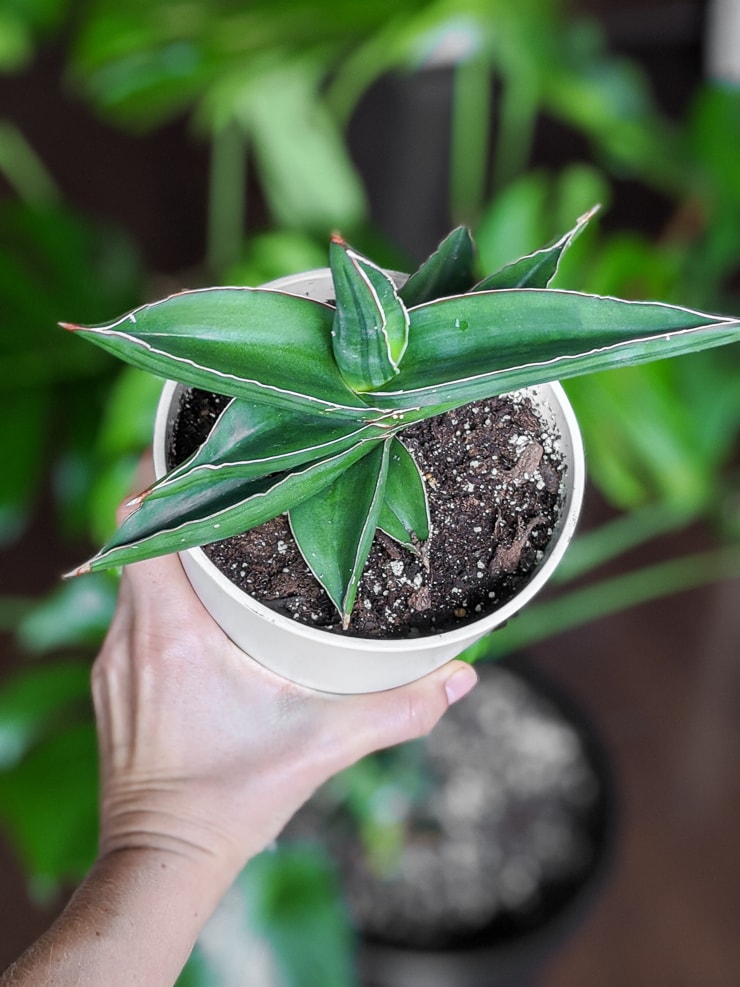
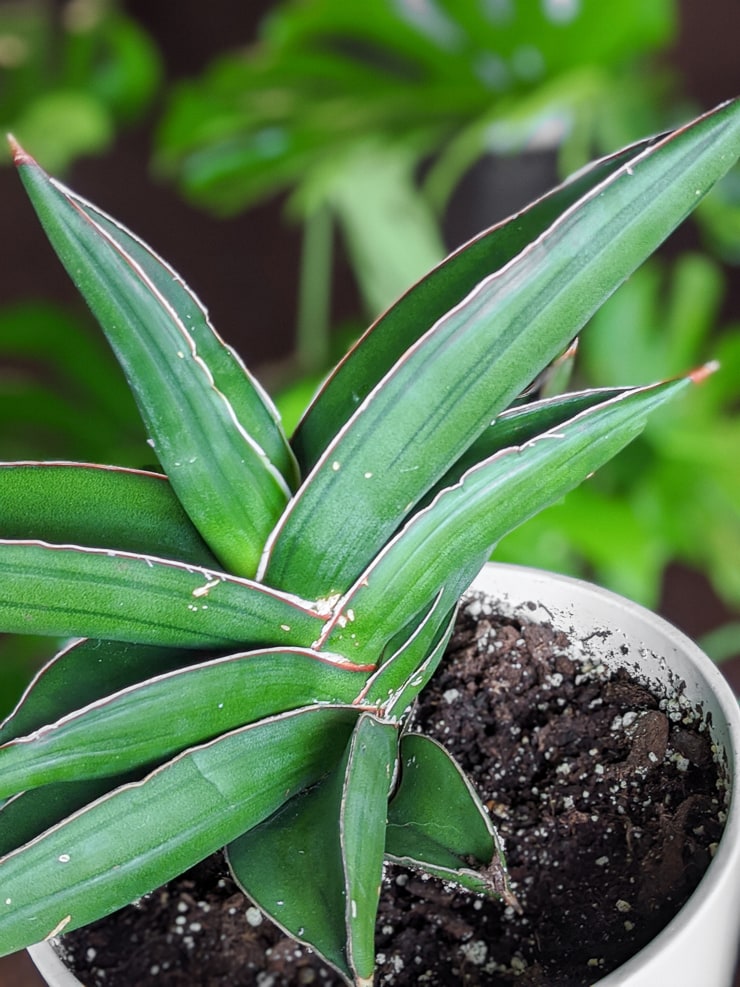
Want other easy-to-care for houseplants? Check out my post about how to care for pothos plants, as well as how to care for prickly pear cactus and don’t miss the best plants to propagate!












